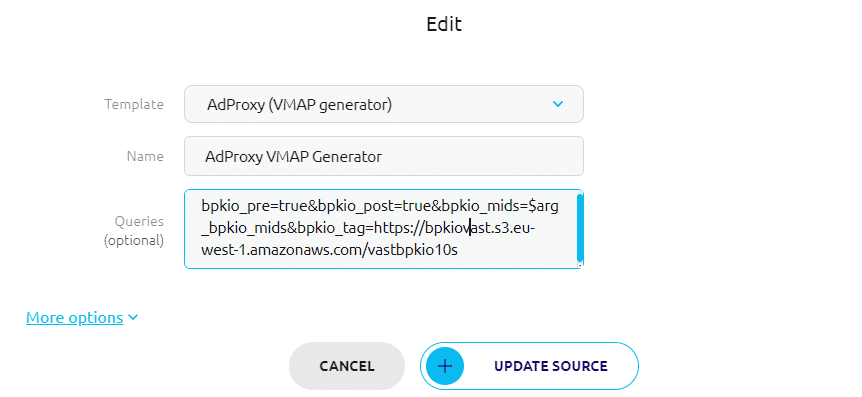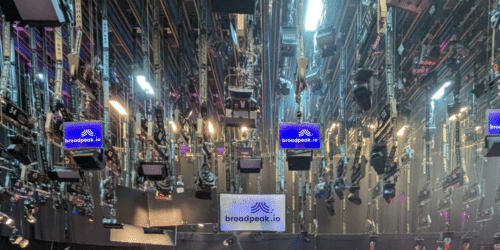If you are a content provider offering subscription-based Video-on-Demand (VOD) services, adding Ad-supported Video-on-Demand (AVOD) may seem enticing. However, enabling ad-supported workflows is not just plugging an ad server on your platform. The process is more complex than it appears.
The good news is that Broadpeak and Bitmovin have joined forces to facilitate and streamline this transition. This blog sheds some light on how we ensured anyone could make this move smoothly and what care we took to ensure end-users would still enjoy a premium UX.
Step 1: Creating ad inventory
Creating ad inventory is one of the first steps to consider when adding AVOD workflows. While non-linear ads, overlay ads, or instream pre-roll ads do not require specific attention for asset media files, in-stream mid-roll ad breaks directly impact the encoding of content. From a content preparation standpoint, media assets must be stream-conditioned to ensure the desired ad insertion cue points can be frame-accurate.
The following examples illustrate the difference between transitioning into an ad break without and with this careful preparation.
Upon listening, you will notice that in the default use case (Poor UX), the “Dior” ad comes in slightly late, right after the sentence, “So now… Now, I need you to go up there and find that woman”. However, in the Premium UX use case, the timing has been adjusted to ensure that the “Dior” ad plays at the appropriate moment.
| User Experience | Poor | Premium |
| Content Preparation | None | With stream conditioning |
| Symptom | See the video on the left below | Frame accurate break positioning |
| Sample (with audio) | See video on the left below | See the video on the right below |
One point worth noting is that creating a cue point does not necessarily mean all end users will have an ad break. The final decision on whether to utilize the opportunity for ad placement is determined by the ad decision server. This decision is typically based on the business rules for the targeted audience and the corresponding commercial plan. On the other hand, achieving a frame-accurate ad break always requires this video processing to be applied to the VOD asset.
There are many options and considerations to automate or at least semi-automate the identification of optimal cue points (automatic scene change detection, default use of chapters, etc.)
Below are concrete examples showcasing how to create a keyframe on the Bitmovin VOD Encoder with a simple API call or a few code lines. Additionally, this Python playbook provides a single method for defining specific splice-point timecodes.

Regarding Server-Side Ad Insertion (SSAI), the configuration on broadpeak.io is straightforward (see AVOD DAI use case). The following snapshot shows what a DAI service looks like on the web app:

In this configuration, the Ad Server leverages the Ad Proxy feature, which enables a dynamic VMAP (Video Multiple Ad Playlist) schedule of ad breaks for every AVOD session request. Below is a snapshot that exemplifies a demo/test setup:

Step 2: Do not let viewers skip all your ads!
Making sure you have control of what ads end users can skip or not is critical. Achieving the right balance between skippable and non-skippable ad ratio requires careful fine-tuning (look at this blog for more details).
Nevertheless, one of the critical components in the solution to enforce whatever ad-skipping policy you have chosen is the SDK running alongside the Player on the end user client app or device. In the Broadpeak case, this lightweight piece of software is called Smartlib.
The Smartlib client SDK enables the locking of player controls or the display of the skip button based on the ad events it detects. Broadpeak and Bitmovin have integrated to facilitate and accelerate the deployment of this capability.
From an end-user experience standpoint, one can enable a “YouTube”-like experience and many other use cases over which you keep control.

Step 3: Impressions and Tracking
Advertisers and DSPs buy inventory from publishers through Ad Servers (and SSPs when trading is done programmatically). In both cases, reporting tracking information (aka ad beacons) to the ad server is an essential part of the monetization process. Some DSPs are only buying when the tracking is done client-side.
In this solution, the same component (Smartlib SDK) handles Client-Side Ad Tracking (CSAT) and returns impressions quartiles to the Ad Server. The following test player extension is an efficient tool to monitor and test sample use cases or assets.

Additional benefits, such as advanced QoE analytics, are also enabled with this implementation. Specific monetization (sample below) and end-user QoE insight can be easily accessed through Broadpeak dashboards providing key metrics and KPIs.

Step 4: User Experience
Today’s end users’ expectations in terms of ergonomics have increased significantly. As part of the default capabilities expected by any streaming viewer, scrubbing (when allowed) is a convenient way to navigate within the content (skip to, skip back, rewind, fast forward, jump to bookmark, jump to chapters, etc.).
Making sure you keep control of your monetization while users navigate back and forth is essential. If you want to test such features, reach out to us. We will ensure you can quickly validate your content and AVOD workflow for optimal monetization and user experience.

Conclusion
Adding AVOD to an existing SVOD platform can be smooth if you know what to expect and are adequately prepared.
Although we have seen some of the most prominent features to look for, many other considerations have not been highlighted in this blog (e.g., what ad tech stack to choose, should the ad inventory be sold through Direct or Programmatic, what anti-ad skipping policy is it best to start with, …).
If you want to know more about those topics, please read this SVOD + AVOD E-book
In addition, the Bitmovin SSAI and CSAI overview guide or Monetization Whitepaper guides will help you get more perspective on those specific questions. In any case, we will be in the starting blocks to do a test with your content and assist you through this exciting path!
Banner picture from Ignacio Amenábar on Unsplash










